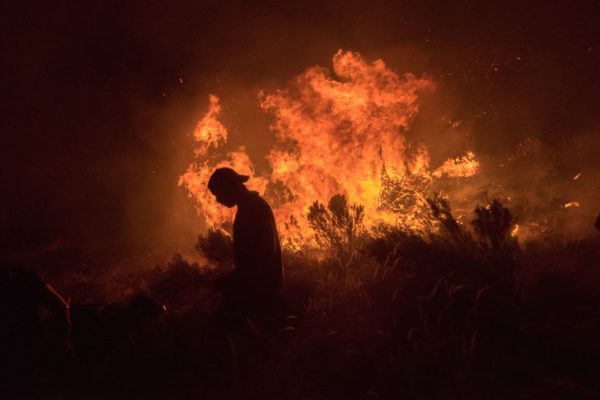For those traveling to South Africa and looking to try paragliding, you might want to think again.
The infamous Lion’s Head and Signal Hill in Cape Town caught fire Sunday night, and roads are still closed off according to officials. As of Monday morning, the flames are finally under control thanks to 70 firefighters and 20 firefighting vehicles working restlessly to stop them. Reports say the fire started Sunday afternoon around 4 pm and got stronger thanks to winds close to 25 to 30 mph. Residents were asked to evacuate the premises as soon as possible. “The city’s fire and rescue service remained at the Signal Hill fire throughout the night mostly monitoring and dealing with hotspots that they could reach,” City of Cape Town Fire and Rescue spokesperson Theo Layne said.
RELATED: Protests Erupt After Black Visitors Were Asked To Leave Cape Town Beach
Emergency vehicles have blocked most of the main roads, but for those flying into the region, there is no need to worry as incoming and departing flights from Cape Town International Airport didn’t seem to be affected by the fire. The best news is that there hasn’t been any property damage or reported injuries, but officials are still looking at the area on the lower slopes of Lion’s Head near Quarry Hill. Some residents and visitors were able to capture video and pictures and post on social media, sending people in a panic.
Watching from home, hard work being done but I'm sure still a long night ahead with this wind. Thoughts are with all the firefighters. Stay safe!! @vwsfires #KloofNekFire #LionsHeadFire #SignalHillFire pic.twitter.com/aRcl1wNJMN
— Sophie Birkett (@BirkettSoph) January 27, 2019
https://twitter.com/ibnezra/status/1089616491434127366
#LionsHeadFire making its way down the mountain now 😟 wind still howling. Really worrying #capetown pic.twitter.com/jLCVVm8Hwj
— Laura Scanlon (@Laura_BodyZone) January 27, 2019
Residents are thankful for the firefighters who worked hard to save the land they called home. “I cannot stress enough how incredible they were,” resident Spencer Jay said. “It was like Dante’s Inferno.” The fire stopped right before it caused damage to the first line of houses and schools in the area. One of the city’s kramats, a place of Muslim worship, on the rump of Lion’s Head also wasn’t damaged as flames got very close to the historic structure. The retiree from London said he and his wife were given offers from numerous people with places to sleep, but they decided to tough it out.
Signal Hill Road is still closed so firefighters can monitor the spots of remaining fire lines and potential flare-ups.
